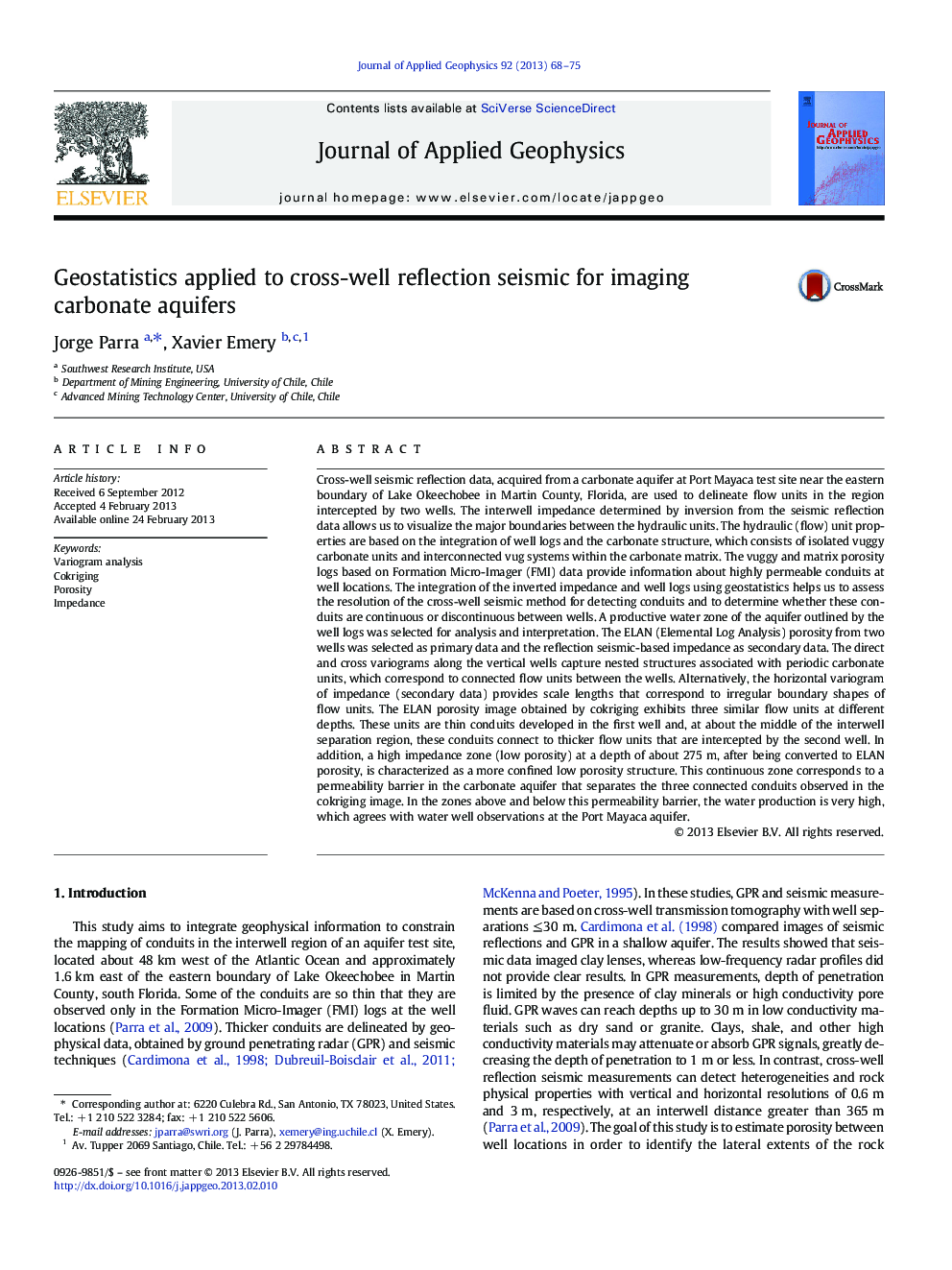| کد مقاله | کد نشریه | سال انتشار | مقاله انگلیسی | نسخه تمام متن |
|---|---|---|---|---|
| 4740397 | 1641159 | 2013 | 8 صفحه PDF | دانلود رایگان |
Cross-well seismic reflection data, acquired from a carbonate aquifer at Port Mayaca test site near the eastern boundary of Lake Okeechobee in Martin County, Florida, are used to delineate flow units in the region intercepted by two wells. The interwell impedance determined by inversion from the seismic reflection data allows us to visualize the major boundaries between the hydraulic units. The hydraulic (flow) unit properties are based on the integration of well logs and the carbonate structure, which consists of isolated vuggy carbonate units and interconnected vug systems within the carbonate matrix. The vuggy and matrix porosity logs based on Formation Micro-Imager (FMI) data provide information about highly permeable conduits at well locations. The integration of the inverted impedance and well logs using geostatistics helps us to assess the resolution of the cross-well seismic method for detecting conduits and to determine whether these conduits are continuous or discontinuous between wells. A productive water zone of the aquifer outlined by the well logs was selected for analysis and interpretation. The ELAN (Elemental Log Analysis) porosity from two wells was selected as primary data and the reflection seismic-based impedance as secondary data. The direct and cross variograms along the vertical wells capture nested structures associated with periodic carbonate units, which correspond to connected flow units between the wells. Alternatively, the horizontal variogram of impedance (secondary data) provides scale lengths that correspond to irregular boundary shapes of flow units. The ELAN porosity image obtained by cokriging exhibits three similar flow units at different depths. These units are thin conduits developed in the first well and, at about the middle of the interwell separation region, these conduits connect to thicker flow units that are intercepted by the second well. In addition, a high impedance zone (low porosity) at a depth of about 275 m, after being converted to ELAN porosity, is characterized as a more confined low porosity structure. This continuous zone corresponds to a permeability barrier in the carbonate aquifer that separates the three connected conduits observed in the cokriging image. In the zones above and below this permeability barrier, the water production is very high, which agrees with water well observations at the Port Mayaca aquifer.
► We produce variograms and cross-variograms of porosity and seismic impedance.
► We use cokriging to estimate ELAN porosity in the interwell region.
► ELAN porosity image shows variation of interconnected flow units.
► Cokriging provides description of connected conduits of high water production.
► Variograms show presence of nested structures due to periodic flow units.
Journal: Journal of Applied Geophysics - Volume 92, May 2013, Pages 68–75
